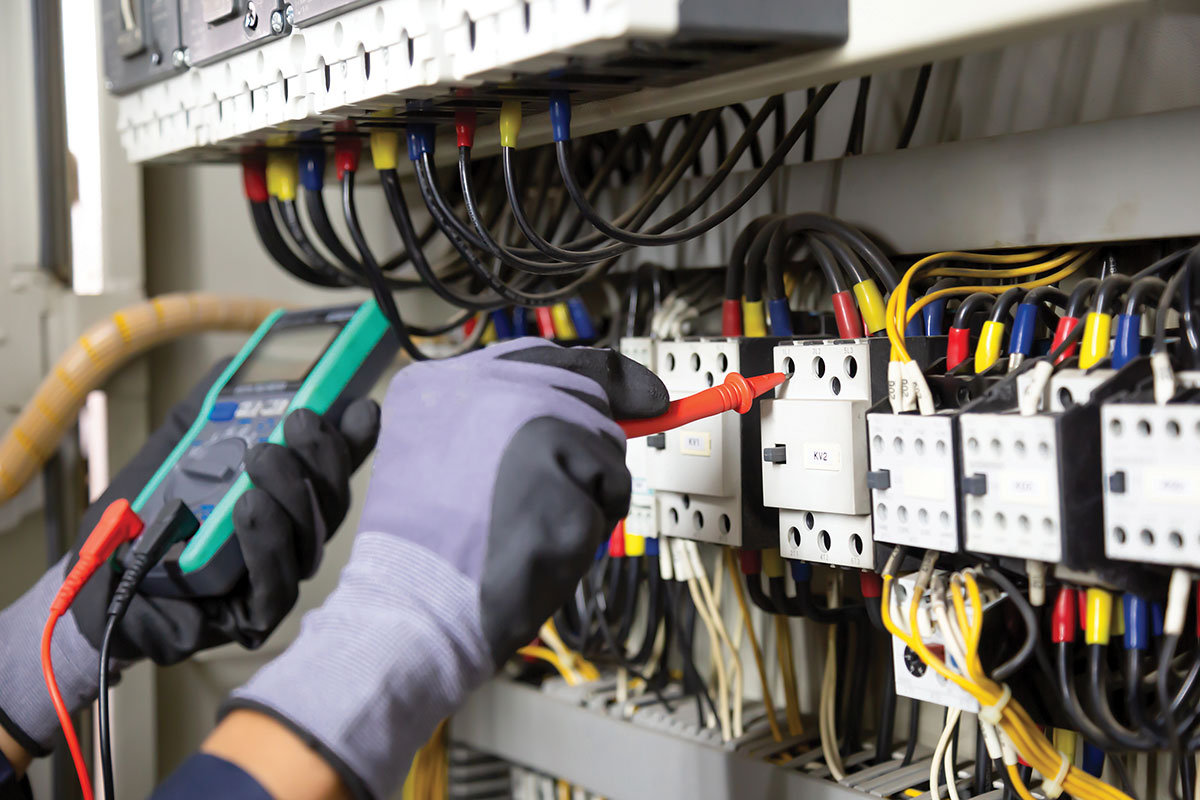Designed to prevent fatal electrical shocks due to ground faults, ground-fault circuit interrupters (GFCIs) have been around for decades. These devices monitor the flow of electricity coming in and out of the device. When a GFCI, such as a receptacle or a breaker, senses that the amount coming in doesn’t equal the amount going out, the circuit trips and stops (or “interrupts”) the flow of electricity.
The 1968 NEC is the first version to mention the use of a GFCI in Section 680-4(g), Lighting, which applied to underwater lighting installations in swimming pools. These fixtures, supplied either directly from a branch circuit or by a transformer, were required to perform reliably under any combination of fault conditions by assuring “(1) The design and construction of the fixture; or (2) The use of a ground-fault circuit interrupter.” This edition also gave us the first definition of a GFCI in the Code.
Definition. A ground-fault circuit interrupter is a device whose function is to interrupt the electric circuit to the load when a fault current to ground exceeds some predetermined value that is less than that required to operate the overcurrent protective device of the supply circuit. [NEC 1968]
Soon, GFCIs were growing in usage, and the NEC-1971 edition had expanded requirements in seven additional sections. Sections 215-8 and 210-22(d) covered permitted uses of GFCI for personnel protection. Receptacle requirements were further expanded for construction sites in 210.7, marinas and boatyards in 555-3, storable pools in 680-31, and at service disconnecting means at 230-95. The NEC -1971 also included the first mention of GFCI protection for feeders supplying power to 15- and 20-ampere receptacle branch circuits. The NEC -1975 introduced indoor GFCI requirements for use in dwelling-unit bathrooms. Countertop receptacles near the kitchen sink have been required to be GFCI-protected since 1987; just how close those receptacles have to be near the sink have changed over time.
General requirements for GFCI protection for personnel are now located in Section 210.8. In NEC -1975, this section included just two short requirements for residential occupancies and construction sites (feeder requirements were in 215-9). Today, this section includes ten requirements for dwelling units, twelve requirements for other than dwelling units, and additional requirements for crawl space lighting outlets, specific appliances, equipment requiring servicing, and outdoor outlets.
In this issue, our authors discuss in detail the many GFCI requirements the code-panels adopted for the NEC-2020. David A. Smith delves into the 2020 changes and also discusses the proper installation methods for GFCI receptacles for individual load protection and downstream branch circuit protection. Vince Della Croce and Ashley Bryant also discuss GFCI basics, NEC-2020 changes, and how to install a GFCI circuit breaker safely and efficiently. Joseph Wages, Jr., IAEI’s technical advisor, chats about how a public input received by CMP-2 for a change in the number of receptacle outlets for kitchen island locations worked its way into the code. NFPA’s Senior Electrical Content Specialist Derek Vigstol also reviews the expansion of GFCI requirements throughout the NEC-2017 and NEC-2020.
Mervin J. Savostianik examines how electrical code changes have impacted electric-shock drowning in the 2017 NEC, and we provide a peek into the changes made in the NEC-2020. Ark Tsisserev gives the Canadian Perspective on the difference between GFCIs and ground fault protection in the Canadian Electrical Code. Rounding up the discussion is an excellent article by Eaton’s Dan Neeser, who covers the new definitions in the NEC-2020 that use the term “fault current.” After you’ve finished reading all these articles on GFCI protection, test your knowledge by taking the Code Hunter quiz, 2020 edition.











Find Us on Socials